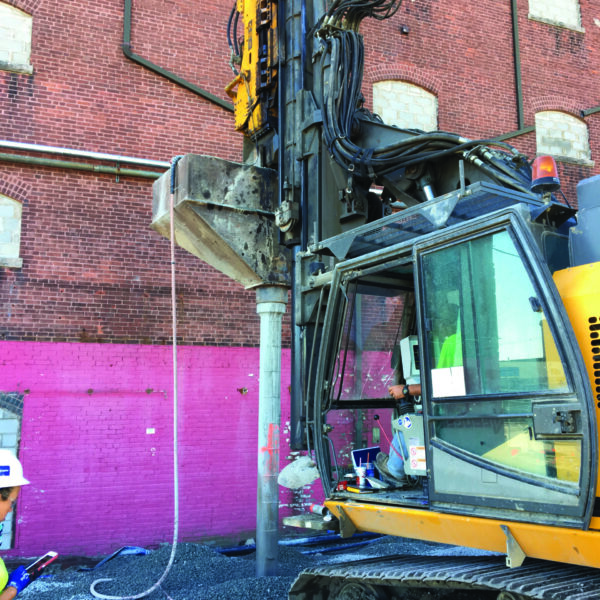Geopier® Rammed Aggregate Pier Elements Installed Within 5 Feet of Existing Structure
Introduction:
An existing warehouse required a 50,000 square-foot addition and needed to remain in-service during construction. The addition included column loads exceeding 300 kips and wall footing loads that surpassed 10 kips per linear foot.
Geotechnical Challenges:
The primary geotechnical challenges included the presence of fill up to about 7-feet-thick, soft organic soils up to about 3-feet-thick, and a shallow groundwater table. The unsuitable fill and soft organic soils were underlain by relatively dense glacial soils. Constructing conventional footings and slabs-on-grade directly on the existing unimproved fill and organic soils would have led to unacceptable settlement.
Geotechnical Design Solution:
The design team evaluated different foundation support solutions including: 1) shallow footings and slabs-on-grade after excavation and replacement of the unsuitable soils, and 2) shallow footings and slabs-on-grade after Geopier Rammed Aggregate Pier (RAP) ground improvement. Geopier RAP ground improvement was chosen as the most cost effective solution as it eliminated premium costs associated with the excavate/replace option, including off-site soil disposal, dewatering, potential shoring, and potential underpinning of the existing structure.
Geopier Rammed Aggregate Pier ground improvement allowed for conventional shallow footing and slab-on-grade construction and helped expedite the construction schedule. The RAP elements were designed to limit the total and differential settlement to less than 1 inch and ½ inch respectively, and provided a maximum allowable footing bearing pressure of five (5) kips per square foot.
Geopier Ground Improvement Advantages:
- Substantial cost savings compared to the excavate/replace option
- Permitted conventional shallow footing and slab-on-grade construction
- Displacement technique eliminated dewatering and excess spoils
- Fast installation that allowed the existing warehouse to remain operational



